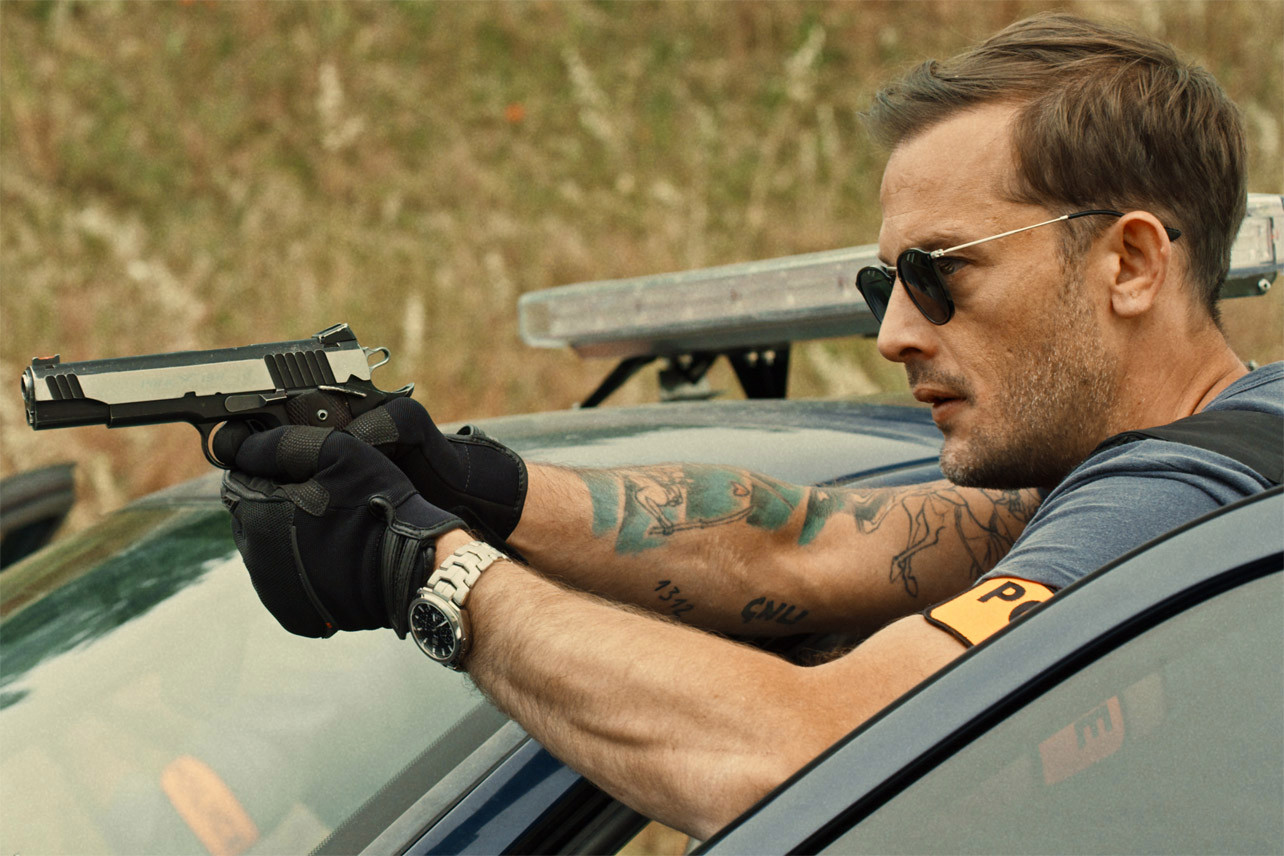When experienced car mechanic Lino (Alban Lenoir) is arrested after ram-raiding a jewellery shop, he is unexpectedly recruited by police chief Charas (Ramzy Bedia) to help modify his team’s cars in order to help them apprehend a gang of drug traffickers who use modified vehicles in order to ensure a fast getaway. However, when Charas is killed during a confrontation with Lino’s old partner Quentin (Rod Paradot), Lino finds himself framed for the murder and has to go on the run. Will he be able to clear his name before the police catch up with him?
The overall plot of the film is somewhat cliched, with a reliance on plot twists and character archetypes that are typical of the genre, such as corrupt cop characters. However, it is the handling of the numerous car chase sequences that really makes the film stand out.
Director Pierret films them with an eye for the visceral, ranging from the first person perspective shots in the opening jewellery shop sequence concluding with moments during the climax that feel like they were taken from a comic book, such as Lino driving a modified Renault fitted out with spikes on the front bumper. This commitment to stylisation, combined with an emphasis on visual coherence that shows off the skilful work of the stunt drivers, results in sequences that match those seen in the popular Fast and Furious films in terms of technique, excitement and tension, with Pierret’s use of POV shots in particular placing the viewer in the centre of the action.
Pierret uses a similar approach to the film’s non-driving action sequences, with a sequence involving Lino trying to escape from a police station featuring impressively-staged fight choreography between Lino and multiple police officers that makes considerable use of realistic fighting techniques shown in a visually impressive manner. This and a later confrontation involving Lino and a shotgun-toting police officer both effectively combine photogenic physical movement with a commitment to realism that doesn’t undermine the overall tone of the film, which would have been achieved had a more elaborate fighting style been used.
There are issues with parts of the film, with Lino’s implausible escape from an interrogation room being one of them – for all his expertise with the rest of the film’s action sequences, Pierret can’t make the relatively thin Lino bending metal bars appear remotely plausible. However, the more glaring problems come in the much-needed lack of development of its supporting characters, which comes second to the film’s fast pace. In particular, Lino’s relationship with fellow cop Julia (Stefi Celma) appears to come out of nowhere with little build-up in order to serve as a convenient plot device and Quentin’s relationship with Lino is hastily explained in a rapid-fire infodump towards the film’s end. Slowing the pace down to allow for more scenes to flesh these characters out would have helped to make their subplots feel more compelling.
Whilst Lost Bullet doesn’t do anything particularly innovative with its main plot and characterisations, its nail-biting action sequences make it a worthy Gallic equivalent to similar petrolhead action films made by Hollywood and, as a result, one to see for any fans of hard-driving action.
